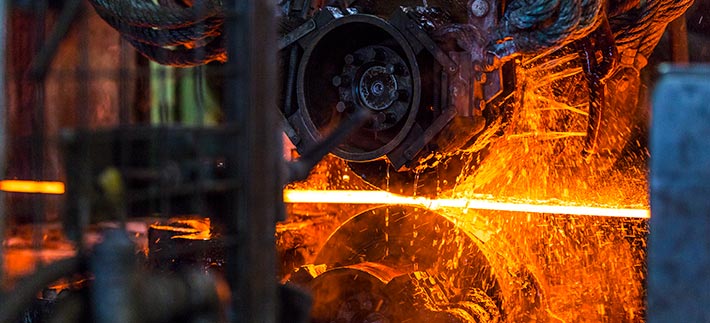

Steel, as we all know, is a vital industrial and construction material. It comes in a variety of forms and has numerous applications. Of course, different processing techniques result in a wide range of steel varieties. How many different processing methods are there? Let's take a quick look at the hot rolling methods and steps that are commonly used in steel processing.
(1) Hot rolling technique
Hot rolling is the process of heating steel to approximately 1000 1250 °C and rolling it into a product using a rolling mill. The traditional hot rolling process is typically divided into two steps:
1. Using a blooming mill or billet mill, roll ingots, billets, or continuous casting billets into billets of a specific shape and size. This hot rolling process is also known as semi-finished product production or blank production.
2. Using various finishing mills, roll billets or continuous cast billets into finished steel of suitable shape and size. This is known as finished product production, and steel processing is divided into two stages: rough rolling and finishing. A large reduction (reduction per pass) is used in the rough rolling stage to reduce the number of rolling passes and increase output; after rough rolling, the finishing rolling stage is entered, and the small reduction amount is used for finishing rolling. Get a nice finish and precise measurements.
With the development of continuous casting production, many enterprises now use continuous casting billets as raw materials and only use the two processes mentioned above to process steel, which is moving in the direction of continuous casting and rolling.
(2) Method of forging
To forge steel ingot into steel, billet, or forging billet, a forging hammer, precision forging machine, fast forging machine, or hydraulic press is used. Forging is an early steel processing method that is classified into two types: free forging and dies forging. Forging methods can produce finished steels with improved mechanical properties and shape, whereas rolling methods are difficult or impossible to obtain.
(3) Extrusion technique
The extrusion method is a steel processing method in which the billet is loaded into the extruder's extrusion cylinder and extruded from the extrusion cylinder's hole. Profiles, pipes, or hollow materials with a specific cross-sectional shape and a smaller cross-section than the blank can be formed. Extrusion is used to make products (such as complex section steel, stainless steel pipes, and so on) that are difficult to make using hot rolling methods.